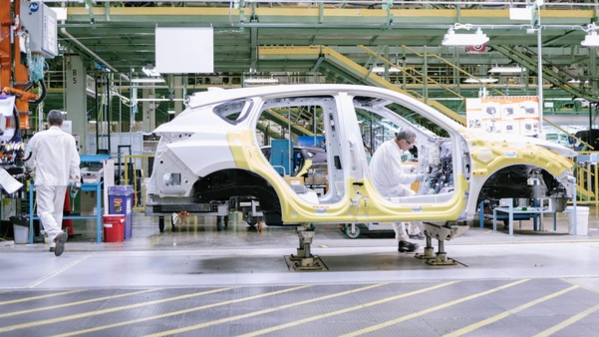Input 2021.02.24 15:18 | Revision 2021.02.24 15:19

Until last month, Hyundai Mobis said, “Currently, we have a maximum of 10 to 2 months of vehicle semiconductor spare for each part.” In a conference call on the 27th of last month, the Hyundai Motor Group also said, “We looked at the entire semiconductor supply chain for vehicles, and prepared them without disruption in production in the short term by intensive management based on tight items.” In the industry, it is predicted that if the supply and demand of vehicle semiconductors continues, Hyundai Motor and Kia, which have accumulated semiconductor inventory, will be in an advantageous position compared to other automakers.
The domestic and overseas automakers are already experiencing production disruptions due to the supply-demand shortage of semiconductors that began in October last year. Volkswagen predicted a total production cut of 100,000 units, including 50,000 units in China, in the first quarter alone, while Audi reduced production of 10,000 units in the first quarter and entered temporary leave of 10,000. Ford had completely shut down its factory in Saarlouis, Germany, until last week. GM Korea’s Bupyeong Plant, which has cut production in half since the 8th, will continue to cut production until this week.
Hyundai Motor Company and Kia were in the position that there were no problems due to the semiconductor turmoil until recently. This is because the inventory management system has been reorganized due to the shortage of parts. As the shortage of wiring harnesses made in China last year and the Japanese government’s semiconductor material export regulations in July 2019 disrupted the supply and demand of parts, Hyundai Motor Company and Kia reorganized the system in a way to diversify their supply chain by increasing the number of major parts suppliers.
However, as the supply and demand of automotive semiconductors is expected to be difficult worldwide and will continue until at least in the first half of the year and later in the second half, Hyundai Motor and Kia are also in a situation where tensions cannot be relieved. In particular, there may be disruptions in the production of models equipped with the first dedicated electric vehicle platform E-GMP that Hyundai Motor Group will introduce this year. Hyundai Motor Company unveiled the Ioniq 5 for the first time in the world on the previous day, and mass production for export to Europe in March and for domestic use in April. Kia will release CV (project name) in July, and Genesis will release JW (project name) in the second half of this year.
Hyundai Motor Company and Kia check standards such as order quantity and inventory to be produced on a weekly basis, and adjust and arrange necessary parts. It is a structure that is difficult to produce first, even if it is a model that the company pushes when the semiconductor supply and demand is blocked. In particular, electric vehicles generally require more semiconductors than internal combustion engine vehicles. About 200 to 300 semiconductors for vehicles are installed in general automobiles, while more than 1000 semiconductors are installed in electric vehicles.
An industry insider said, “All global automakers are planning to launch electric vehicles this year, but they met an unexpected reef of the semiconductor supply and demand shortage,” said an industry official. “Because the damage to the domestic automobile industry is bound to lead to small and medium-sized partners, “We have to work hard to secure automotive semiconductors.”
